Microsoft Surface Pro 3: Hands On, Display & Performance Preview
by Anand Lal Shimpi on May 20, 2014 3:25 PM EST- Posted in
- Tablets
- Microsoft
- Mobile
- Surface
- Surface Pro 3

Earlier today Microsoft announced its 3rd generation Surface Pro device, aptly named the Surface Pro 3. This is the first Surface model to deviate from the 10.6" 16:9 form factor of all four previous devices (Surface Pro, Surface RT, Surface Pro 2, Surface 2) and instead standardizes on a 12" 3:2 form factor. The resulting device is also substantially thinner, now at 9.1mm (0.36"). Surface Pro 3 is now somewhere between the thickness of Surface 2 and Surface RT.
The original Surface Pro featured a kickstand that could stay open at a fixed 22-degree angle. Surface Pro 2 added another stop (40 degrees) to the kickstand to allow for more flexible, laptop-like operation. Surface Pro 3 features the same initial 22-degree stop, however it can be opened to any angle beyond that (up to 150-degrees) using a new high friction hinge. The hinge opens with little effort to its first stop, anything beyond that requires additional force. It's enough to feel secure, but not too little that the hinge loses its position. It's unclear how this new hinge will hold up over time but I suspect Microsoft put a good amount of testing into it.
With the device width comes a new type cover with a larger trackpad and secondary magnetic strip. The second magnetic strip can provide a second attach point to the Surface Pro 3, allowing the cover to be a more stable base when used in laptop mode. In practice the new hinge with more stable type cover creates a much more laptop-like base, which definitely comes in handy when typing on your lap. In my brief time with the review unit I still found it to be less stable than a laptop, but it's a far closer approximation to the laptop experience than it ever has been before.
The new trackpad is substantially larger horizontally and features a new lower friction surface. The trackpad is actually a clickpad with left/right buttons activated by pushing down on the lower left/right corners of the clickpad itself. Using the integrated trackpad on previous Surface covers was an exercise in madness that got mildly better last generation.
Right off the bat the new clickpad on the 3rd generation type cover is a lot better, but it's still not in laptop-territory as far as experience goes. I'll need to spend more time with it to see if it's truly past the point of being frustrating to use.
There's a new battery powered pen for Surface Pro 3. You lose some pressure sensitivity (256 levels vs 1024), but there are new features that Microsoft hopes will make up for it. I haven't spent much time with the new pen at all so I'll save commentary on it for the full review.
The new design features the same sized battery as previous Surface models. I'm guessing we'll see a reduction in battery life given the new, presumably higher power display, but I'll find out for sure over the coming days.
Microsoft also added 802.11ac support to the new Surface Pro courtesy of Marvell's Avastar-AC solution (88W8897 perhaps?).
And yes, connected standby is supported.
| Microsoft Surface Pro Comparison | |||||||||
| Surface Pro 3 | Surface Pro 2 | Surface Pro | |||||||
| Dimensions | 11.5 x 7.93 x 0.36" | 10.81 x 6.81 x 0.53" | 10.81 x 6.81 x 0.53" | ||||||
| Display | 12-inch 2160 x 1440 | 10.6-inch 1920 x 1080 w/ Improved Color Accuracy | 10.6-inch 1920 x 1080 PLS | ||||||
| Weight | 1.76 lbs | 2.0 lbs | 2.0 lbs | ||||||
| Processor | Core i5-4300U with HD4400 Graphics (15W Haswell ULT) | Core i5-4200U with HD4400 Graphics (15W Haswell ULT) | Core i5-3317U with HD4000 Graphics (17W Ivy Bridge) | ||||||
| Cameras | 5MP/5MP (front/rear) | 1.2MP/1.2MP (front/rear) | 1.2MP/1.2MP (front/rear) | ||||||
| Connectivity | 802.11ac WiFi | WiFi | WiFi | ||||||
| Memory | 4GB or 8GB LPDDR3 | 4GB or 8GB LPDDR3 | 4GB | ||||||
| Storage | 64, 128, 256 or 512GB |
64 or 128GB (4GB RAM) 256GB or 512GB (8GB RAM) |
64GB or 128GB | ||||||
| Battery | 42.0 Wh | 42.0 Wh | 42.0 Wh | ||||||
| Starting Price | $799 | $899 | $799 | ||||||
Display
With Surface Pro 3, Microsoft finally accepts that while 16:9 may be a great aspect ratio for watching movies but it's not optimal for a multi-purpose tablet. The tablet features a 12" 2160 x 1440 display (RGB stripe, not RGBW/PenTile), which ends up being a 3:2 aspect ratio. The difference is immediately noticeable in notebook-style use. While the Surface Pro 2 was never quite all that comfortable to use as a laptop, Surface Pro 3's display makes it substantially more laptop-like. There doesn't appear to be a substantial impact to tablet use either with the larger display. Particularly with Windows 8.1's split screen mode, the larger display ends up working extremely well. I'll talk about the new hinge a bit more in the usability section but the aspect ratio alone is a huge step forward.
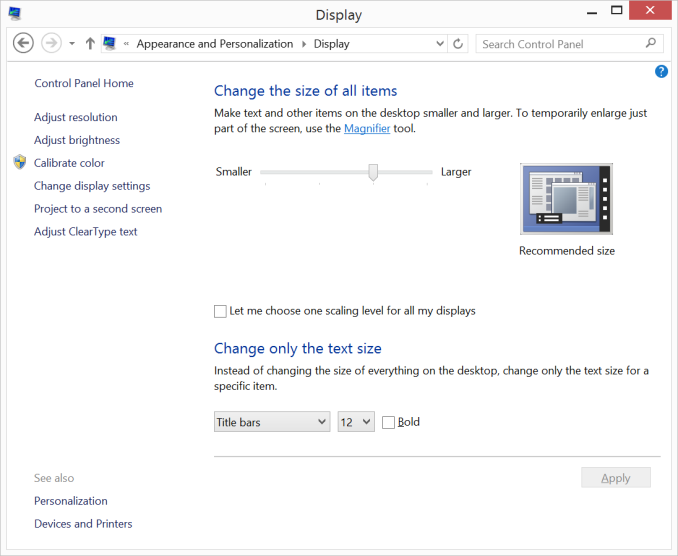
Default Scaling on Surface Pro 3
Color accuracy is improved out of the box as well. The original Surface Pro had a display capable of being quite accurate, if calibrated, but out of the box it was a bit of a mess. Microsoft slowly improved out of box calibration over the years, eventually culminating in what we have today with Surface Pro 3.

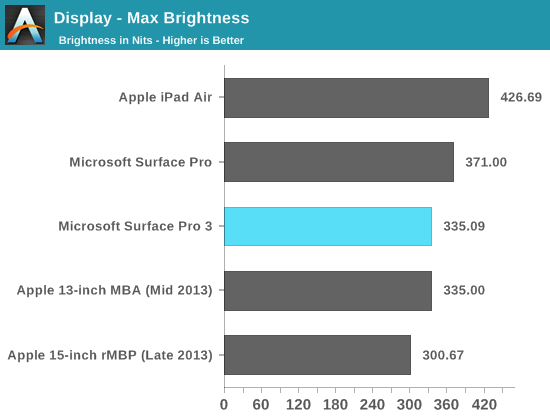
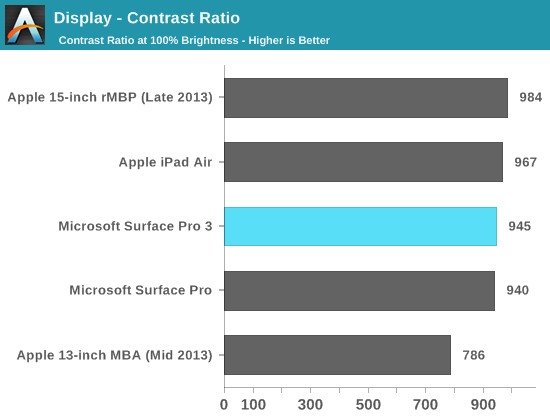
Max brightness drops a bit compared to Surface Pro 2, likely due to the Pro 3 having 50% more pixels to light. Black levels at max brightness are pretty good, thanks in part to Microsoft's optically bonded LCD/cover glass stack. Contrast ratio remains competitive with previous designs.
Grayscale accuracy is the biggest issue with the new display, green levels are just way too high:
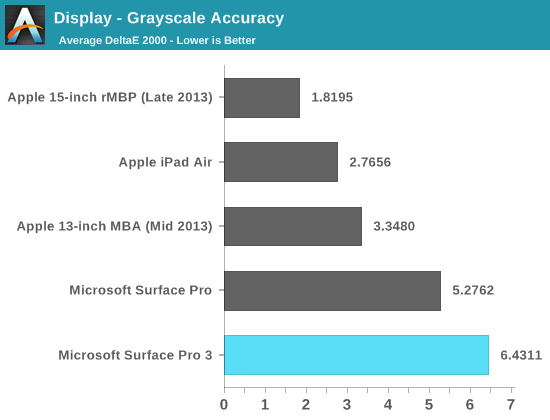
Our basic sRGB gamut test paints a great picture for Surface Pro 3. Full saturation color reproduction is excellent:
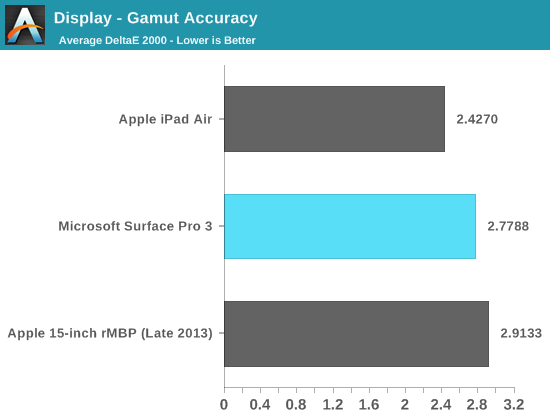
The saturation sweep also looks solid:
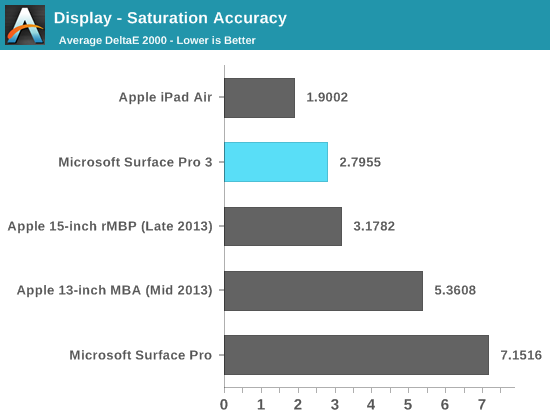
Unfortunately Surface Pro 3 doesn't do so well on our GMB color checker test. Part of the problem is its performance in the grayscale swatches included in this test:

Overall the display is a big improvement over the previous Surface Pro generations, but it's still behind iPad Air territory in terms of color reproduction which is disappointing. Given Microsoft's focus on Surface Pro 3 as an image editing tool, I would've hoped for class leading performance across the board.
Performance
Surface Pro 3 still uses a 15W Haswell ULT SoC. My review sample uses a Core i5-4300U (a speed bump of SP2's original 4200U), although there are also Core i3 and i7 options as well. In the case of the i5-4300U we're talking about a dual-core/4 thread Haswell part with a 3MB L3 cache. The CPU cores run at up to a 1.9GHz base frequency and 2.9GHz max turbo. The latter is quite impressive given the incredibly thin (9.1mm) Surface Pro 3 chassis. My guess is that Intel is giving Microsoft the best binned Haswell ULT parts to ensure good performance at low thermals. There are still 4GB or 8GB memory options, although my sample came with 8GB of LPDDR3.
I saw sustained speeds of 2.6GHz while running single-threaded Cinebench 11.5:
The system's internal fan was definitely audible during the Cinebench run.
On the storage front Microsoft is still using a SATA based drive. It's unfortunate that more PC makers haven't shifted to PCIe, although I suspect that'll come next year with NVMe based solutions (I hope). My review sample featured a 256GB Samsung PM851 drive, this is an OEM version of the TLC based Samsung SSD 840 EVO.
Despite featuring a thinner chassis, I measured performance improvements over both previous Surface Pros. I'll have more data in the final review but here I'm seeing a 3 - 20% increase in performance over the Surface Pro 2.
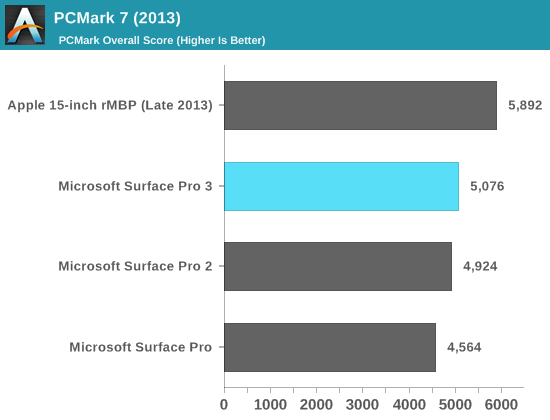

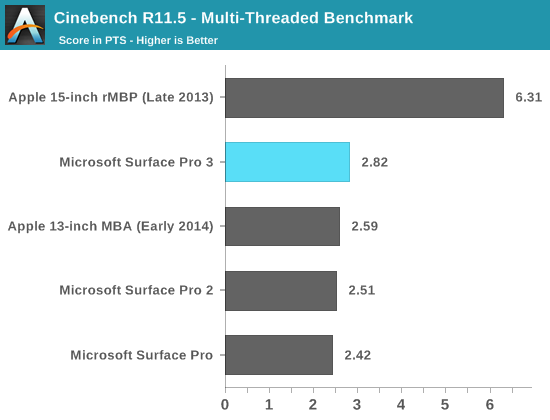
Final Words
There's a lot more work to do on Surface Pro 3, including substantial battery life testing and continued usage. If there's anything in particular you guys want to see us touch on, leave it in the comments below.


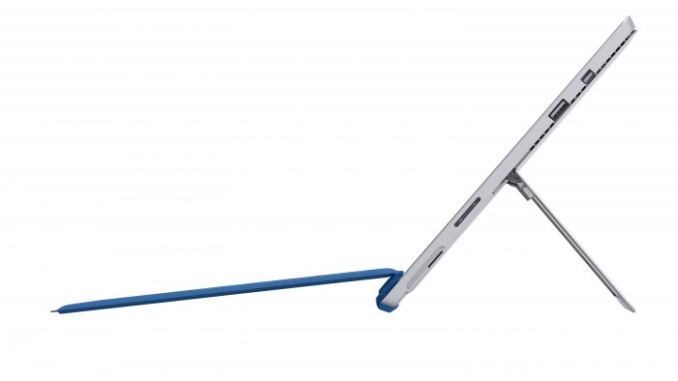
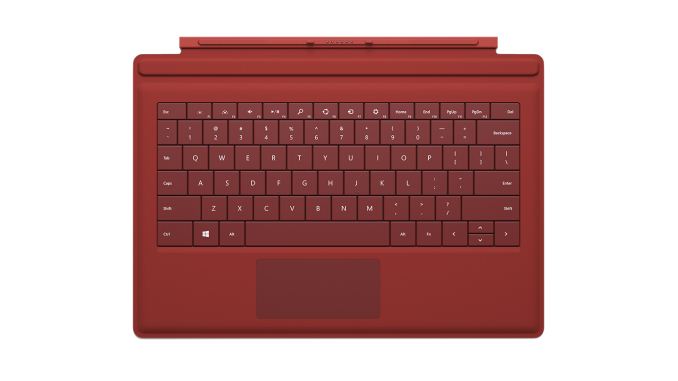
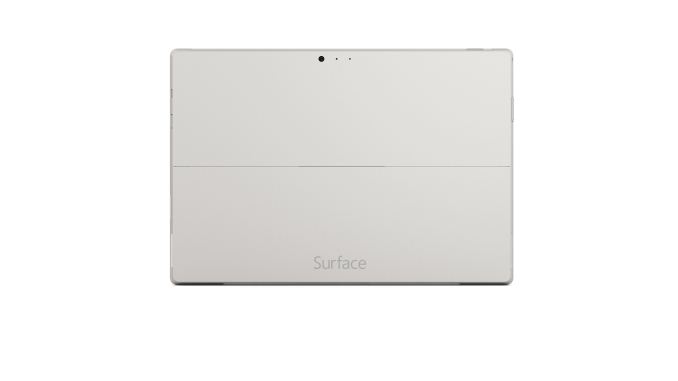
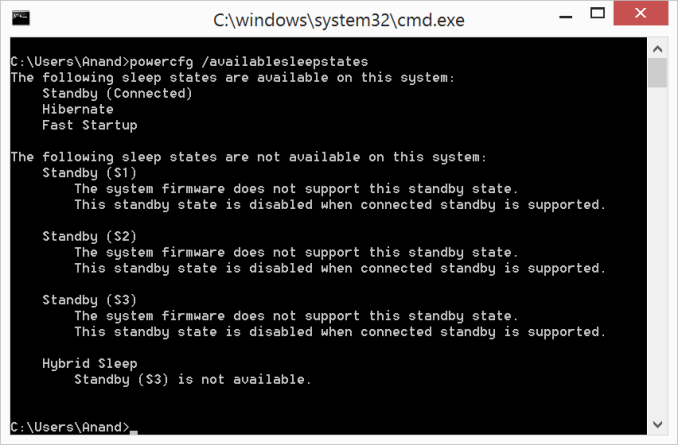
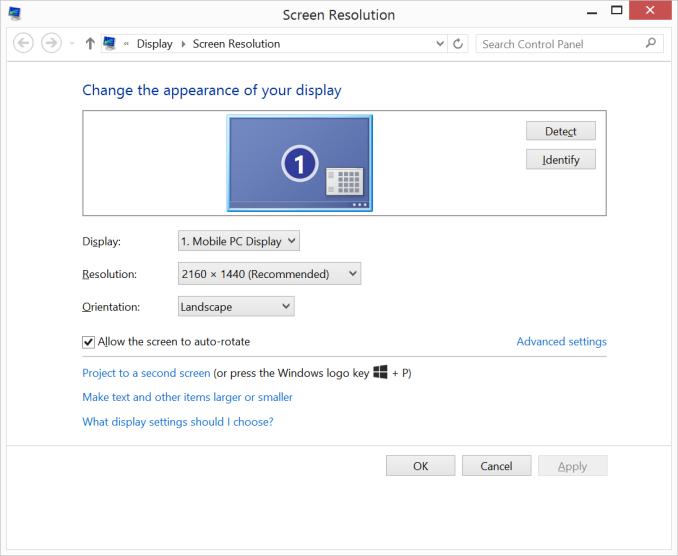



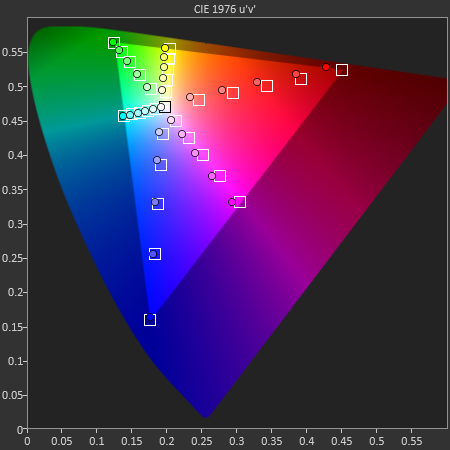


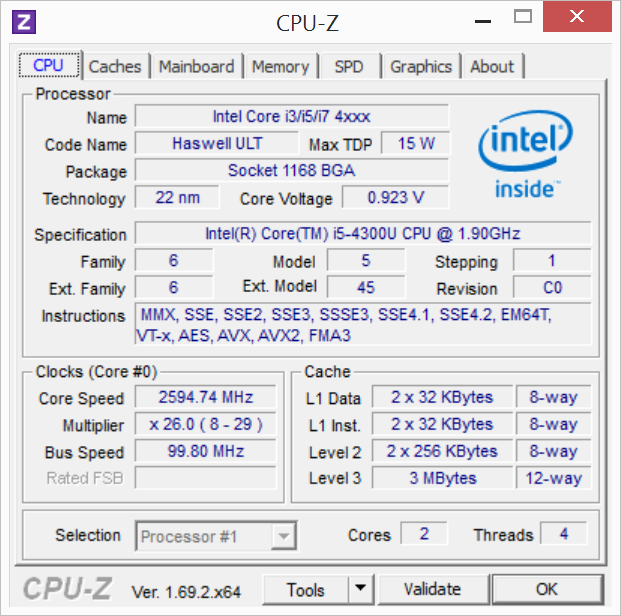
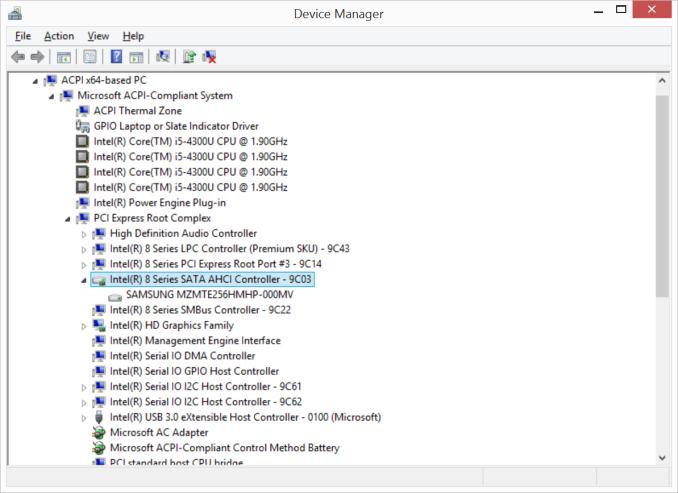








295 Comments
View All Comments
akdj - Saturday, May 24, 2014 - link
You should re read it. He's speaking of him/herself NOW. In the present. Others around the world as well. And he or she is absolutely correct. Today's flagship smartphones are significantly faster that yesterday's computers. Who cares what the future holds. Right now, in the present desktop Salea are down year in, year out, double digits. Laptop sales, down (excluding I believe Lenovo and Apple). Tablets and smartphones in particular, OFF the chart. And you can put em in yer pocket!errorr - Saturday, May 24, 2014 - link
Thanks for the defense.While I tried to predict further in the future the fact is that we are a lot closer than people believe.
When I worked at a big consulting/SI firm I was issued a laptop. I did a little bit of email on my phone but needed the laptop to log into the VPN and CRM and later project management systems. Now, I know people who will spend a week without using their laptop. They can download a Cisco app and log onto their CRM system on their phone. Most of their work is done in email. The only thing they need a laptop for is to make a slide deck in PowerPoint.
I've since gone back to school and bought my own nice shiny ultrabook. I loved that machine but 2 years in I barely open it unless I'm writing a paper. I have reverted back to taking notes with pen and paper. I use my phone to upload a PDF snapshot of my notes after class to my Google drive. There are not any websites or databases I use that don't have an app. The nice laptop is a glorified typewriter.
In both scenarios, which I will claim are becoming the dominant usage model, the laptop is useful because it has a keyboard, a mouse, a bigger HD, and a bigger screen.
In what world do any of those things need to be built into something together. Why can't I connect my Bluetooth mouse and keyboard to my phone and have the image sent to a large screen. I already have a NAS set up for extra storage. These are not pie in the sky ideas nor would implementing them be difficult.
My TV is half way there with Chromecast. I control the cable box with my phone. A monitor doesn't need more than a basic SOC to do what I really want it to.
The rest of my original comment was more of a reply to the 'you can't do real work on x' type arguments. Gaming is an interesting thought but NV isn't far away with Shield. If you have a demand for more compute (like when I used to do data mining and finance stuff) it seems much better to be able to send that off to an AWS instance or the like.
Ultimately, both tablets and laptops (or both like surface) are losing their Raison d'etre. I find the keyboard, mouse, and screen useful in only a limited way now and there is no reason that should continue for much longer.
errorr - Saturday, May 24, 2014 - link
On a side note, the tablet market is kinda fascinating. At the high end in the developed world the iPad is the vast dominant player. But, it is just a iPhone with a bigger screen and battery. Why can't it just be stripped down to a screen eventually? Also there is a question of how big is the market for iPads? It seems that the replacement cycle is much much longer than for smart phones.At the other end is the developing world and the wild success of super cheap sub $200 Android tablets. However, there is a mystery because they never show up online or in connected apps.
Based on some anecdotes and speculation I've read those cheap tablets are becoming the primary media consumption device in the 3rd world. Data plans are too expensive to be popular. You can go to a town and get some kid to load up an SD card with days or weeks worth of TV and movies. I read about a reteraunt in India where they offered their customers tue service of filling up an SD card with all the latest Bollywood releases. The owners kid would take your SD Card in the back to where a computer with broadband was and fill the card up. Now the person can watch movies at home at their leisure without any need for a TV and DVD player.
Another anecdote I read from Indonesia had the street vendors who used to sell pirated DVDs now just offering to out everything as an mp4 on an SD card.
So cheap Android tablets are replacing TVs in the developing world. Most of these people will never own a computer in their life.
I'm not sure what that means but it doesn't seem good for the future of tablets or laptops.
errorr - Saturday, May 24, 2014 - link
Always something I forget to mention...The reason the smartphone will win is because of Identity and Security. My phone knows who I am, who I know, and where I am. It is always connected (a little hyperbole) and is the portal for my entire life. Messaging and social networks can all be integrated within the phone. As multifactor identification becomes universal the phone will become the central device. I can store the limited amount of truly vital or secret information encrypted on my phone. It is potentially a far superior way to run things and it seems Apple is moving in that direction.
Now that good enough compute has come to the central device in my life I just can't justify buying something like a tablet no matter how much I want to.
Ranari - Wednesday, May 21, 2014 - link
Hey Anand! Longtime fan of your site. May I kindly request for consideration in your review:-More details on the processor selection (Core i3, i5, and i7). It looks like the Core i3 has no turbo boost? That might significantly affect performance.
-Battery life and HD performance, which you're already reviewing I'm sure. No rush there.
-Can the pen scratch the screen?
-Gaming benchmarks. No rush though. I have a gaming PC for that, but just curious. :)
-Can it get too hot to hold?
kyuu - Wednesday, May 21, 2014 - link
As far as the pen scratching the screen, stylus aren't anything new. They figured out how to do make them work without giving them a tip that will gouge your screen out a long time ago. Nothing to worry about there, unless you glue a diamond to the tip of the stylus or something equally strange.Wolfpup - Wednesday, May 21, 2014 - link
I could swear I saw a picture that showed a CPU + additional chip, implying some of these models might use Crystalwell?I'm probably reading too much in to a marketing graphic someone at Microsoft grabbed without understanding what it meant LOL
smartass11 - Wednesday, May 21, 2014 - link
Its 10% off with educational discount. So the base model is only about 720 dollars. Way better than iPad or MBA.akdj - Saturday, May 24, 2014 - link
They just dropped the entry price to the MBA to $899. $80 more or twenty less than the keyboard you'll need. Double the storage too. Faster storage too. Faster graphic chip, lower Rez display though. No touch. No stylus. More IO. This doesn't compare with the ipad. I'd buy this if you're looking for an actual computer (for education). An iPad can be later as a 'companion'. You don't need iTunes, a Mac or anything else to use the iPad ...it's autonomous. It's definitely a more 'companion device' meant to compliment and enjoy media, consume your books, magazines or comics. Games and some fun editing tools for music, audio, video and photography...but a decent SP3 would be Perfect for a student though. Keep in mind the 'extras'. Keyboard. Spyware. Memory stick. Mouse. Many of which you may already possess. Also the battery life. Both are included in the MBA. (Obviously only if you're considering one or the other). The past two generations have moved in to the 12 hour territory for the 13" models. That's pretty awesome if you're studying all dayKrysto - Wednesday, May 28, 2014 - link
But who would want as 12" standalone tablet? Everyone is going to have to pay $130 for the cover, too, so the $720-$800 pricing is very misleading.